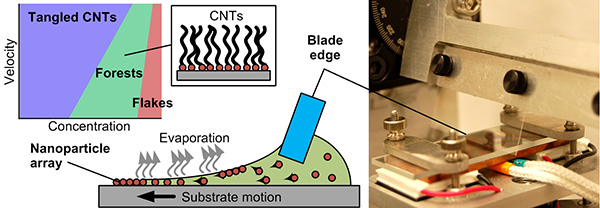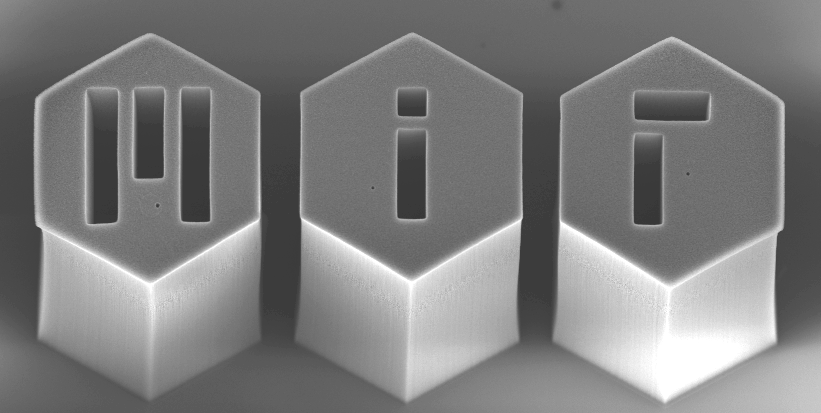E.S. Polsen, M. Bedewy, A.J. Hart. Decoupled control of carbon nanotube forest diameter and density by continuous-feed convective assembly of catalyst particles. Small, 9: 2564–2575. [http://dx.doi.org/10.1002/smll.201202878]

The widespread potential application of vertically aligned carbon nanotube (CNT) forests have stimulated recent work on large-area chemical vapor deposition growth methods, but improved control of the catalyst particles is needed to overcome limitations to the monodispersity and packing density of the CNTs. In particular, traditional thin-film deposition methods are not ideal due to their vacuum requirements, and due to limitations in particle uniformity and density imposed by the thin-film dewetting process. Here, a continuous-feed convective self-assembly process for manufacturing uniform mono- and multi-layers of catalyst particles for CNT growth is presented. Particles are deposited from a solution of commercially available iron oxide nanoparticles, by pinning the meniscus between a blade edge and the substrate. The substrate is translated at constant velocity under the blade so the meniscus and contact angle remain fixed as the particles are deposited on the substrate. Based on design of the particle solution and tuning of the assembly parameters, a priori control of CNT diameter and packing density is demonstrated. Quantitative relationships are established between the catalyst size and density, and the CNT morphology and density. The roll-to-roll compatibility of this method, along with initial results achieved on copper foils, suggest promise for scale-up of CNT forest manufacturing at commercially relevant throughput.
